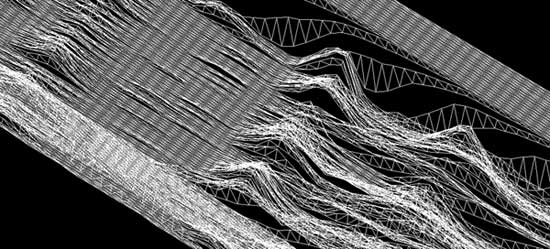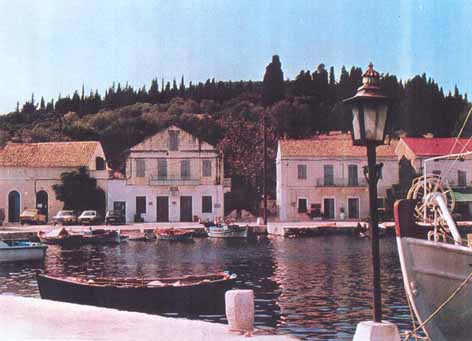

The sound-spatial environments integrate into a wider frame of acoustic topology and data visualization concepts. Artificial landscapes are formed, that sometimes seem to mimic the corresponding natural ones, such as valleys or ocean surfaces, or, due to the change of scale they belong, micro-landscapes that are not visible to the naked eye. They are a sort of cartography of sound. They are based on sound data analysis of certain areas, musical compositions, or experimental modulations of a single sound source (like a musical instrument) into such ways that affect drastically its visualization. The strategy being used here begins with the mapping of sound on to a two-dimensional surface whose, length and width (two spatial values) are replaced by time (duration of sound) and frequency (two properties of sound). Then, based on the volume data of the sound throughout the frequency range and duration, the 2-dimensional mappings are extruded so the final surface obtains a third dimension. Using different approaches next, formatting these surfaces, a new series of surfaces, objects and shells are produced where sound becomes concrete, tangible and accessible.
Supervisor: Tzirtzilakis Yorgos
Reference Number: 246


In this degree thesis both architectural and urban development of the traditional settlement of Fiscardo (Kefalonia) is examined. In the beginning, architectural and, moreover, cultural heritage are mentioned, as well as the national and european context of documents (declarations, decisions, charters) concerning its protection. Subsequently, a brief view of the urban development of Fiscardo is presented, since its establishment to nowadays, as well as one of the architectural characteristics of the area, seen through the context of the island in general. A refer to the standing legislation is following, as far as Fiscardo and other historic centers are concerned. Emphasis is given in two past studies about the village which were never completed. Moreover, the analysis of the existent situation is being stated (after an original research), as well as the main problems that were indicated during this research. At the last part, a strategic plan about the sustainable administration and protection of the settlement is being proposed, as well as some specific suggestions concerning protection of landscape, setting of building conditions, mass declaration of listed buildings etc.
Supervisor: Tarani Paraskeui
Reference Number: 216

